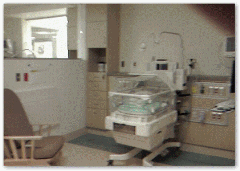If you are not familiar with alarm fatigue, it’s when too many alarms are going off at one time and clinical workers will tune some of them out, as there are false positives today that occur or the alarm would be minimal compared to other device alarms. This is one of the reasons why I rant about software that does more than “one” thing and in the hospitals I’m sure some folks would be very appreciative of this. I’ll repeat embedding this video once again that was from a couple months ago to give a better picture.
“Alarm Fatigue”–Monitors at the Hospital That Sometimes Are Not Heard
When you look at the list, what is at the top, interfacing between devices and information system, what I said was overlooked a couple of years ago with meaningful use. If you look at the entire list, these are all very common concerns as more technology enters the hospital and other health care facilities. Number 2 is also big as “budgets and money” are a big concern here and with hospitals scraping for money and insurers getting richer, I think we are off balance here.
We are starting to burn out the CIOs and maybe we burnt out the biggest one of all with Mr. Kundra leaving soon. I could see it clear as day when I attended this conference in Los Angeles back in December of 2010. I get frustrated just doing this blog and trying to offer straight talk that is not found elsewhere on some of this.
CIO Confidence In Meaningful Use Drops-The New Left Curve of Technology That Arrives Daily Contributes-Don’t Burn These Folks Out
I guess I pay attention here being that I used to code and my head goes into auto pilot thinking about the work and planning with system that I see and I know it’s a lot of time and work and is taxing. For those outside of the Health IT business, you may not have one clue as these folks get a new left curve with technology every day. I’m working on a project right now that yesterday gave me a new left curve ad a partnership that used to exist ended so now I’m restructuring and re-designing my original plan, nothing I did, but a fast adjustment and change to make. This is like a roller coaster out there today and I think almost any healthcare CIO will vouch for that. 
More technology without proper planning and enough training time for us humans to absorb is starting to have a negative effect as every system needs training and we have to learn how to work with it, and then add on some social network issues and the day is full. Anymore I really don’t see how that many in Health IT have much time and just this week a favorite CIO of a hospital system told us all on Twitter that he missed us, he doesn't have time to even think about it any more. I guess if you are not on some inside circles working with some of this, it might not be apparent as an outsider but it’s there and the list from the survey taken is real. BD
SAN ANTONIO—In an Association for the Advancement of Medical Instrumentation (AAMI) survey, clinical engineers and biomedical engineering technicians named interfacing devices and information systems the top challenge at their hospitals. Also ranked highly as challenging were maintaining computerized IT systems and managing alarm systems.
The information stemmed from a research survey commissioned in November 2010 conducted by Stratton Research via email, with questions sent to more than 2,500 hospital biomedical technicians and clinical engineers. There were 418 responses, and the results were published in the March/April issue of the Biomedical Instrumentation & Technology. Clinical engineers and hospital professionals met Monday at AAMI conference to discuss the findings.
The top ten challenges were:
1. Interfacing between devices and information systems
2. Maintaining computerized IT systems
3. Managing alarms
4. Maintaining and processing endoscopes
5. Broken connectors
6. Wireless management
7. Battery management
8. Problems with patient monitors
9. Problems with dialysis equipment
10. Managing the radiation dose from CTClark said that alarms, averaging between 200 and 600 per day at some hospitals, need applied management techniques. New systems should not necessarily be set with the default alarm settings that come with new equipment. He recommended getting below 100 patient alarms per day, or even as low as four per patient, he said. It’s been reported that the default alarm settings on monitors are not appropriate, and perhaps, overkill.
“Because it’s a complex problem, you need a complex solution,” Clark said. “We need a multi-disciplinary approach to resolve this problem. False alarms and nuisance alarms were by far the biggest problems that lead to alarm fatigue.”
AAMI: Alarm fatigue, IT, interoperability among top 10 biomed challenges



As a vendor of policy management
ReplyDeletesoftware for hospitals, we experience the burnout from our clients on a
regular basis. As the workload of CIOs pile on, and their work hours
stretch thin, they barely have any time or mental energy to keep track of their
existing projects, much less take on new ones. We see this during inflection
points when we release a new software update or schedule a regular training
session. Every new task, no matter how small, is a source of frustration because
they're already at the brink. The only thing we can do to alleviate the pain by
making our software as simple as possible, both from a back-end perspective and
a user interface perspective. We also work to make our software as intuitive as
possible, minimizing the training and/or maintenance needed.
great information, thanks for share
ReplyDelete